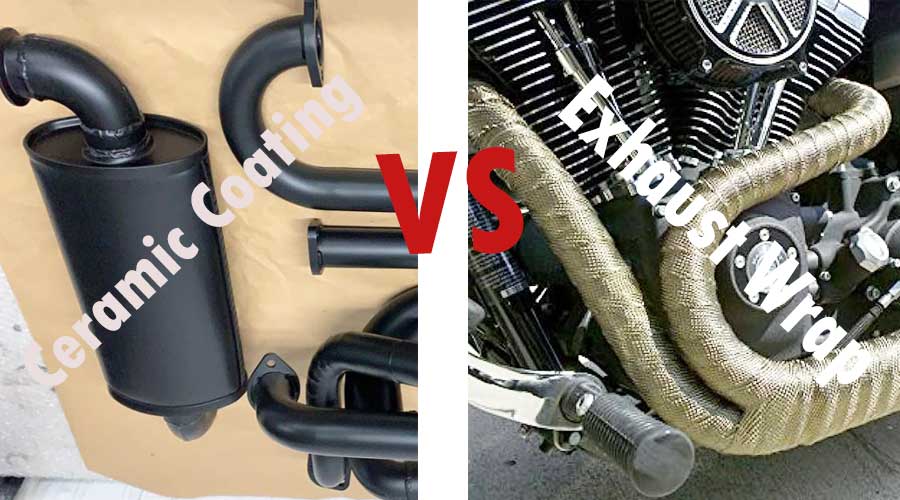Does Road Salt Damage Ceramic Coating? Does Coating Protect It?
The combination of winter & road salt has been a genuine concern for car owners for a long time. The adverse effects of this phenomenon are so severe and unavoidable that people had to come up with something to save the car from serious damage.
Besides wax and rust protectants, the ceramic coating has gained familiarity as a reliable solution for quite a long time. Now the question that everybody has in their minds is, how well the ceramic coating can protect against road salt and to what degree it gets damaged while doing the job.
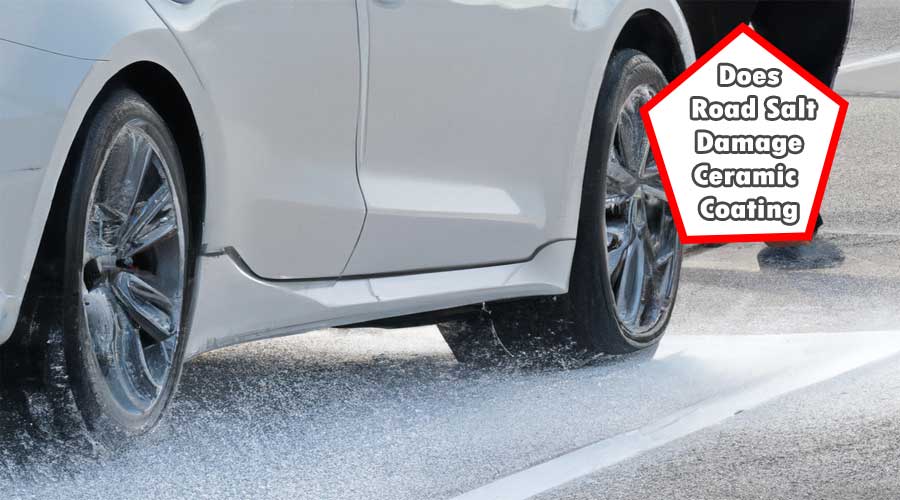
In this article, we’ll get to the details about these common concerns to clear out the confusion once and for all. Having a good understanding of these things will give you a clear idea about the whole thing and will help you to take certain decisions at the right moments. Keep reading if you want to learn more.
So, let’s start!
What Is Ceramic Coating?
Ceramic coating is a chemical solution of dissolved polymers applied to your car’s exterior to protect it against certain damaging factors. This liquid polymer coating is applied as an extra protective layer on the car’s paint. It doesn’t just protect your car against some serious damage, it also offers a glossy finish!
A ceramic coating works as a long-term solution for your car’s exterior. Once you give a touch-up to the ceramic coating, you’ll be good for another 3 months. Four maintenance services a year can significantly increase the lifespan of your car. This covers up for the winter preparation also.
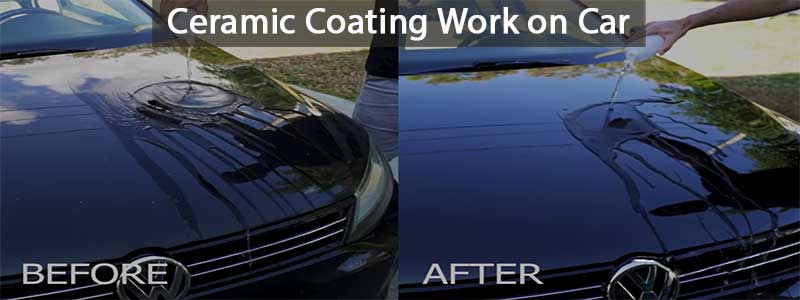
Ceramic coating is also an affordable solution to keep the damage to your car’s exterior to a minimum. And that’s not just because it lasts for a long time! Speaking of which, this polymer coating can last for 3 to 5 years depending on what it endures. This protective coating also costs a lot less compared to many others in the market.
Also, you don’t need to get it done by a professional in an automobile shop. You can do it all by yourself in your garage or on the front lawn. Just make sure to avoid direct sunlight while doing the job. Direct sunlight doesn’t allow the coating to adhere properly and the solution evaporates quickly due to the heat.
Here’s How Ceramic Coating Protects Against Road Salt
Ceramic coating is a reliable exterior protectant for your car for a great many reasons. It prevents premature aging & color fade. It also keeps your vehicle safe from dirt & brake dust. But our main focus here is on how it offers protection against road salt and its effect on accelerating the rusting process.
The main damage your car has to deal with in winter is the rusting caused by road salt. Now ask yourself, how does rusting occur? Basically, when moisture and oxygen come in contact with exposed metal, an oxidation reaction occurs and it starts to form rust. And if the phenomenon lasts for a long time, the damage can be severe.
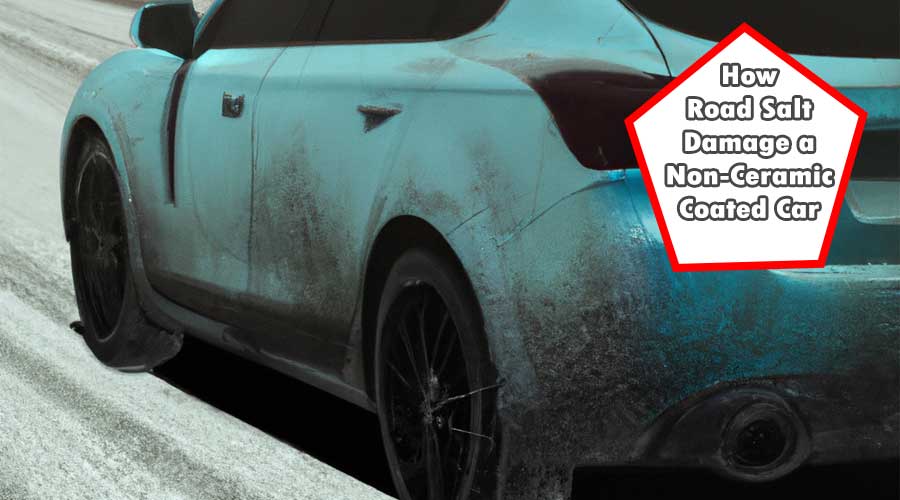
The solution here is to prevent moisture and oxygen from penetrating the paint surface and that’s where the ceramic coating excels. It has a hydrophobic property which is also known as ‘water beading’. Because of this special attribute, moisture can’t stay on the surface for a long time.
Thanks to the smooth surface of the ceramic coating, the water rolls off quickly from the car’s surface. The reason behind that is the microscopic peaks that fill the pores of the paint surface. This significantly eliminates the potential for water blocking on top of the paint.
However, this protective layer doesn’t really save your car from water spots and swirl marks. Some brands also claim that their ceramic coating can prevent scratches and rock chips but that’s not entirely true. The best it can do is reduce the potential of such buildups.
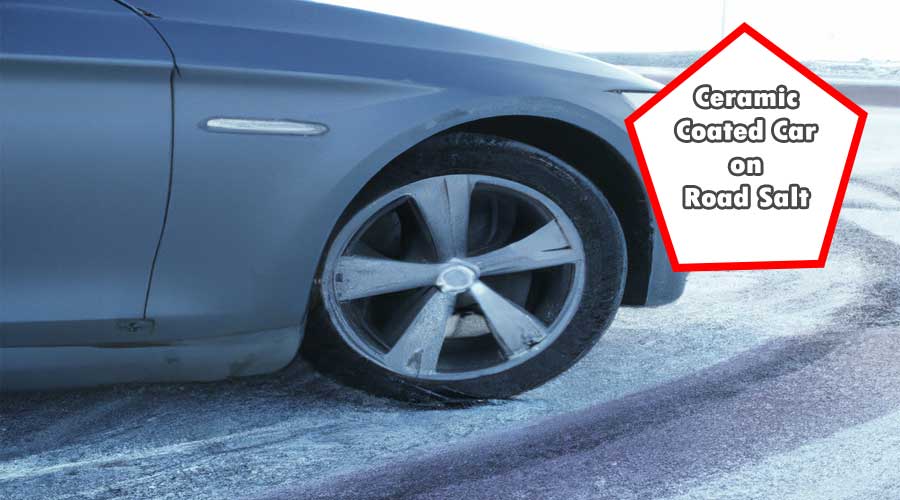
Read to know: How Long Does Ceramic Coating Take to Cure
Can Road Salt Damage Ceramic Coating: The Answer is YES!
Ask yourself, what are the two major damages that road salt cause to your car and why? The first thing that comes to mind is definitely the rusting but there is another thing and it’s quite obvious. Yes, road salt or any kind of salt, in general, is corrosive! As a matter of fact, this is what leads to rusting in the first place.
In northern areas where the snowfall blocks the roads and walkways, road salt along with sand is used to reduce the melting point of ice and make the road surface less slippery. So when we say ‘road salt’, it doesn’t just mean salt. Moisture, salt, and sand create a slush which also has acidic properties.
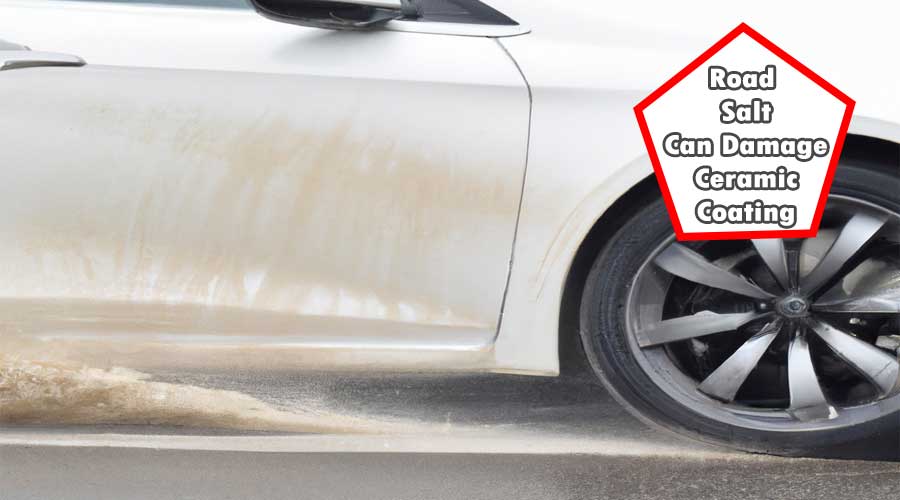
When you drive your car, your tires spatter salt-mixed slush on the surface of the car. Due to the corrosive property of the salt, the ceramic coating gradually gets damaged. And over a couple of years, it starts to peel off. That’s when you need to redo the coating once again.
The corrosive property of road salt causes damage to ceramic coating just like it does to the paint of your car. The only difference is, ceramic coating can endure damage longer than paint, and it costs quite less. It also protects the undercarriage of a vehicle and significantly increases the lifespan of parts.
Read before apply: How To Apply Ceramic Coating
FAQ
People living in a neighborhood with a sea near them often notice some damage that’s usually caused in presence of salt. That’s because the airborne water droplets in there contain microscopic dissolved salt particles. That can gradually cause salt-mixed water buildup and cause certain damage.
To prevent that from happening, you need to wash your car two or three times a month. Try to park the car in a garage where the air can’t enter easily. You can also use a car cover if you don’t have a closed garage space. You can also polish your car with wax or use other protective coatings.
Car paint can easily last 10 to 15 years but the lifespan can reduce significantly if the car is exposed to salt. According to a report from the National Highway Traffic Safety Administration, if your car is exposed to road salt for 8 years or so, the surface becomes vulnerable because of the corrosion.
Road salt is something you have to deal with if you live in a neighborhood where snowstorm is a common thing. But to make the best out of the situation, you can use protective coatings and wax besides washing your car on a regular basis.
Ceramic coating offers protection against a great many things. That includes road salt, rust, premature aging, dirt, moisture, and brake dust. The smooth surface also allows you to clean the dirt off the surface quite easily. It also keeps the paint safe from the damage of UV rays.
There are a few trivial things too! Ceramic coating saves the car surface from bird droppings which are quite acidic (pH 3 – 4.5). Then again, when you’re driving at 60 km/h on a country road, you’ll notice bug stains at the front of your car. The ceramic coating works as a protective layer against that as well.
Washing a ceramic-coated car isn’t that different from usual car washing but there are certain tips that’ll help you make the coating last longer. First of all, avoid automatic car washing on a regular basis. This can really damage the coating. Hand wash the car with soap and shampoo and use a hose pipe for rinsing.
My Two Cents At the End
The ceramic coating offers great protection against road salt. Even though its protective properties wear off after a couple of years, it’s a good deal for the money. It doesn’t just keep the paint protected, it prevents rusting and color fade. Among most other DIY protectants out there, this one offers the best.
Without using a protectant like ceramic coating, you’ll end up dealing with more loss because of road salt and moisture. This thick layer of protective coating can easily double the lifespan of certain parts of your vehicle. So, why not spend a little to save a lot?
I’ve read this article based on my own experience, knowledge on this matter, well-thought research, and of course the opinions of other users. Hopefully, you found this helpful!

